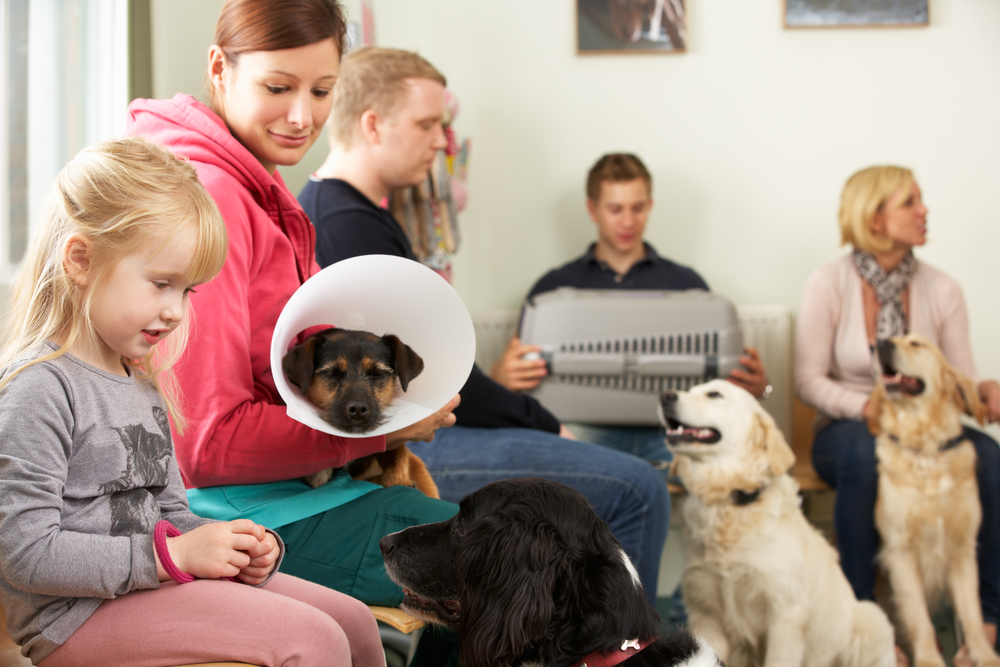Veterinary Waiting Room Etiquette

Veterinary waiting room etiquette is probably not so unlike that in a human hospital waiting area. Anticipation, stress, and impatience can run high, especially in an emergency. When a pet is unwell or has suffered an accident or injury, it’s understandable that it can create upset among pets and pet owners.
Even if you’re waiting for a scheduled appointment, the situation can be stressful due to others’ actions or unexpected delays due to someone else’s emergency.
A waiting area is one that ideally should be as welcoming, calming, and well managed as possible. How can a pet owner contribute to this? We’re glad you asked.
9 Important Tips to Good Veterinary Waiting Room Etiquette
The waiting room of any hospital can be a hectic place. Practicing hospital lobby etiquette is more than just keeping the peace – it is also a way to protect all the pets and people who are waiting there.
Here are 9 important things to remember when you are waiting for the veterinarian.
- Keep your dog on a leash. Hospital waiting areas can be stressful for many pets. To have a dog loose and running about, even a friendly one, can make matters worse.
- Keep your cat in a carrier. Please keep your cat or other small mammals in a carrier during their stay in the lobby for their protection and comfort.
- Keep your pet away from other waiting animals. Dogs are curious and may want to greet other dogs (or peer in at the cats). Keep your dog next to you, within your control and safely on their leash. This reduces the potential of spreading disease (especially to unvaccinated puppies) and reduces the chances of a fight or aggression from a dog in pain.
- Be aware. Tensions can escalate quickly between animals with stress, pain, shyness or anxiety. Stay aware and keep an eye on your pet.
- Success starts before you leave the house. Alleviate some of your cat’s stress by getting them used to their carrier and to being in the car well before a visit. Calming pheromone sprays like Feliway in the carrier can also help. If you need advice, just ask. There are also calming sprays for dogs. Bring treats if you need a distraction.
- Give your pet time to go to the potty ahead of time. This not only reduces the likelihood of accidents, but it also helps your pet be calmer during the wait.
- Go to the restroom before your visit if possible. It’s best to never leave your pet unattended in the waiting room.
- Communicate your pet’s needs. Please let reception know ahead of time if your pet is showing signs of a contagious illness, such as an upper respiratory infection or cough. Also, let us know if your pet has an accident in the waiting room. (Don’t be embarrassed–it happens all the time.) If your pet is very anxious or has behavioral issues, we would also like to know so that we can put your pet at ease and arrange for everyone’s safety.
- Practice good manners. Just like you might at a human waiting room, practicing patience and respect for others can go a long way in making everyone’s experience a positive one. Put cell phones on silent and take phone conversations outside to create a quiet, more relaxing environment.
Maintaining positive interactions with others keeps the process of getting everyone checked in smooth–even in serious and sometimes stressful situations.
At OVRS, we understand that when a furkid is unwell or has had an accident, it is a scary time. We hope that by educating pet owners and creating a positive and calm environment in the lobby waiting area, we can encourage a better experience and prognosis for all of our pet patients and their loved ones.
If you have any questions about veterinary waiting room etiquette, please do not hesitate to call us.


